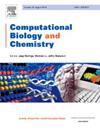预测新辅助放疗反应的细胞类型相关标记的解卷积。
IF 2.6
4区 生物学
Q2 BIOLOGY
引用次数: 0
摘要
肿瘤微环境包含不同细胞来源的预后分子标记物和治疗靶点,这些标记物和靶点在直肠癌放疗后的耐药性和复发中仍未得到充分揭示。通过整合scRNA-seq数据,我们将术前新辅助放疗(nRT)前采集的直肠癌大体转录组学数据分解为六个细胞类型的组分和基因表达。推断出的髓细胞和基质细胞的细胞类型相关 DEGs(缩写为 caDEGs)富集于重叠但独特的生物过程,包括免疫、血管生成和新陈代谢。生态型分析表明,caDEGs 反映了与 nRT 反应相关的细胞状态和生态型。通过将 caDEGs 分别映射到scRNA-Seq数据中的无上下文配体-受体和新构建的配体-受体和胶原整合素列表,我们推断出 297 种细胞类型特异的反式和/或顺式胶原整合素和 219 种异型配体-受体相互作用可能与 nRT 反应有关,包括基质相关的 COL1A2/COL6A1/COL6A2 与基质或 CMS1 相关的 ITGA1/B1 之间的相互作用、上皮相关的 JAG1 与基质相关的 NOTCHs 之间、CMS2 上皮相关的 CCL15 与增殖骨髓相关的 CCR1 之间、骨髓相关的 CCL4/CD86 与淋巴内皮相关的 ACKR2 之间、骨髓相关的 TNFS13B 与 B 细胞相关的 TNFRSF13B/C 之间等。有趣的是,研究结果表明,对 nRT 耐药的癌症中有更多下调的细胞类型相关标记物。至少从两个独立的 nCRT 数据集 GSE119409、GSE35452 和 GSE45404 中推断出了有利的髓相关 CD14、上皮相关 DYM、基质相关 COL1A2 和 COL3A1,以及不利的上皮相关 CELSR3 和 KCNH8 标记。这些结果为了解上皮细胞以外的基质细胞和免疫细胞在直肠癌放疗耐药性中的作用提供了启示。所提出的方法也适用于其他疾病。代码和更多数据可在 https://github.com/Xueling21/rectalNRT_deconv 上获取。本文章由计算机程序翻译,如有差异,请以英文原文为准。
Deconvolution of cell-type-associated markers predictive of response to neoadjuvant radiotherapy
Tumor microenvironent contains prognostic molecular markers and therapeutic targets from different cellular sources, which are still not fully revealed in the resistance and recurrence after radiotherapy for rectal cancer. By integrating the scRNA-seq data, we deconvoluted the bulk transcriptomics of rectal cancer collected before preoperative neoadjuvant radiotherapy (nRT) into fractions and gene expression of the six cell types. The inferred cell-type-associated DEGs, abbreviated as caDEGs, of myeloid and stromal cells were enriched for overlapping yet unique biological processes including immunity, angiogenesis, and metabolism, respectively. Ecotyper analysis indicates that the caDEGs reflects cell states and ecotypes in association with nRT response. By mapping the caDEGs onto the context-free and newly built ligand-receptor and collagen-integrin lists from scRNA-Seq data, respectively, we inferred 297 cell-type-specific trans- and/or cis-collagen-integrin and 219 heterotypic ligand-receptor interactions potentially associated with nRT response, including interactions between stromal-associated COL1A2/COL6A1/COL6A2 and stromal or CMS1-associated ITGA1/B1, between epithelial-associated JAG1 and stromal-associated NOTCHs, between CMS2 epithelial-associated CCL15 and proliferating myeloid-associated CCR1, between myeloid-associated CCL4/CD86 and lymphatic endothelial-associated ACKR2, and between myeloid-associated TNFS13B and B cell-associated TNFRSF13B/C, etc. Intriguingly, results suggest a greater number of down-regulated cell-type-related markers in resistant cancers to nRT. Favorable myeloid-associated CD14, epithelial-associated DYM, stromal-associated COL1A2 and COL3A1, and unfavorable epithelial-associated CELSR3 and KCNH8 markers were inferred at least from two independent nCRT datasets of GSE119409, GSE35452, and GSE45404. The results provide insights into roles of the stromal and immune cells beside epithelial cells in resistance to radiotherapy for rectal cancers. The proposed approach can be applicable to other diseases as well. Codes and additional data are available at https://github.com/Xueling21/rectalNRT_deconv.
求助全文
通过发布文献求助,成功后即可免费获取论文全文。
去求助
来源期刊

Computational Biology and Chemistry
生物-计算机:跨学科应用
CiteScore
6.10
自引率
3.20%
发文量
142
审稿时长
24 days
期刊介绍:
Computational Biology and Chemistry publishes original research papers and review articles in all areas of computational life sciences. High quality research contributions with a major computational component in the areas of nucleic acid and protein sequence research, molecular evolution, molecular genetics (functional genomics and proteomics), theory and practice of either biology-specific or chemical-biology-specific modeling, and structural biology of nucleic acids and proteins are particularly welcome. Exceptionally high quality research work in bioinformatics, systems biology, ecology, computational pharmacology, metabolism, biomedical engineering, epidemiology, and statistical genetics will also be considered.
Given their inherent uncertainty, protein modeling and molecular docking studies should be thoroughly validated. In the absence of experimental results for validation, the use of molecular dynamics simulations along with detailed free energy calculations, for example, should be used as complementary techniques to support the major conclusions. Submissions of premature modeling exercises without additional biological insights will not be considered.
Review articles will generally be commissioned by the editors and should not be submitted to the journal without explicit invitation. However prospective authors are welcome to send a brief (one to three pages) synopsis, which will be evaluated by the editors.
 求助内容:
求助内容: 应助结果提醒方式:
应助结果提醒方式:


